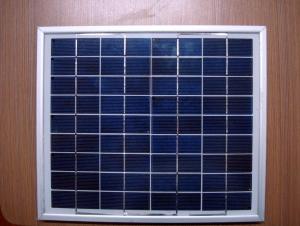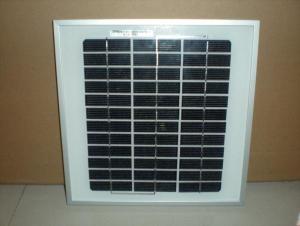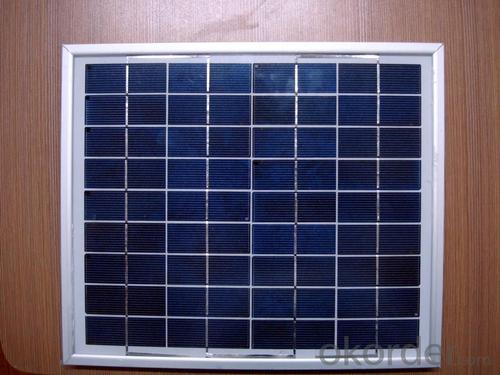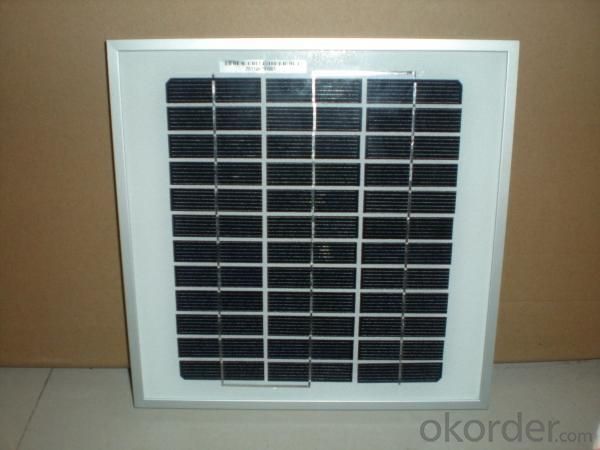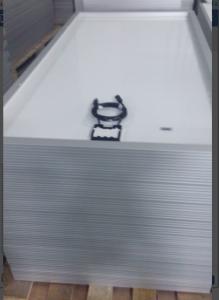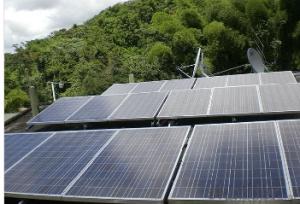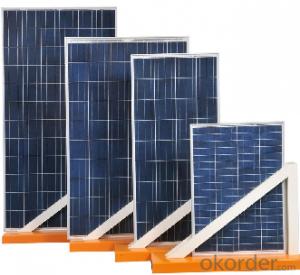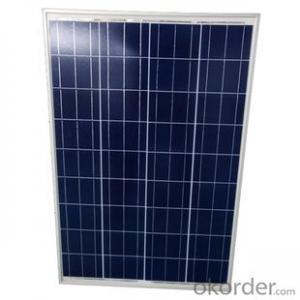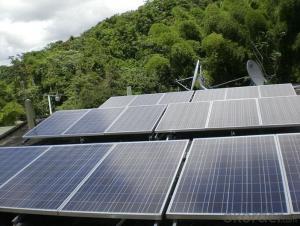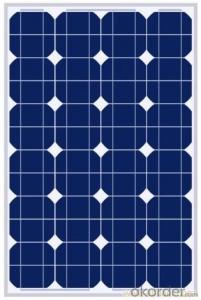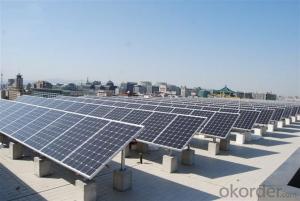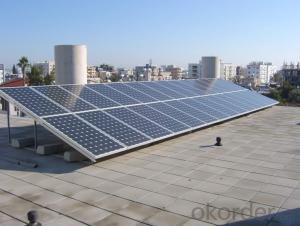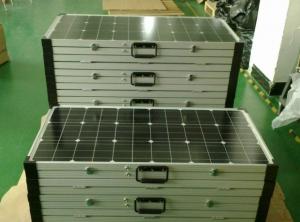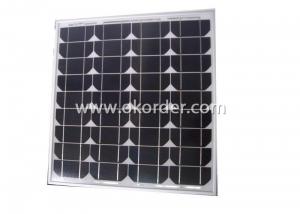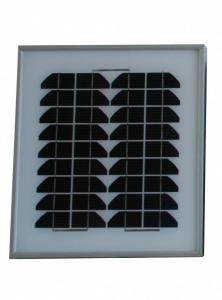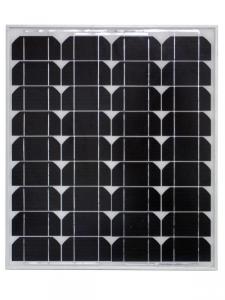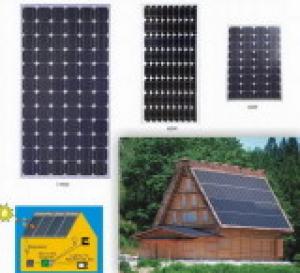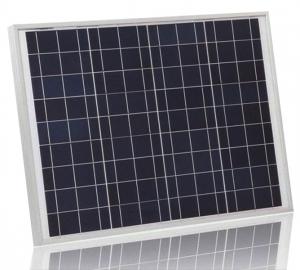Solar Polycrystalline Solar Panels Set
- Loading Port:
- Shanghai
- Payment Terms:
- TT
- Min Order Qty:
- 1 pc
- Supply Capability:
- 100000/month pc/month
OKorder Service Pledge
OKorder Financial Service
You Might Also Like
Solar Polycrystalline Series
Introduction of Solar Polycrystalline Series
CNBM Solar photovoltaic (PV)module is designed for large electrical power requirements. It is the optimal choice for both on-grid and off-grid power systems. CNBM Solar panel offers high performance of power per square foot of solar array.Poly- or multicrystalline silicon(poly-Si or mc-Si): made from cast square ingots — large blocks of molten silicon carefully cooled and solidified. Poly-Si cells are less expensive to produce than single crystal silicon cells, but are less efficient. US DOE data shows that there were a higher number of multicrystalline sales than monocrystalline silicon sales.
Characteristics of Solar Polycrystalline Series
I.Solar Cell : High efficiency crystalline solar cell. Even if under the weak light, the solar module can produce maximum power output.
II.Tempered glass (toughened glass): Anti-reflecting coating and high transmission rate glass increase the power output and mechanical strength of solar module.
III.EVA and TPT: Using high quality EVA and TPT to prevent destroying and water.
IVAI frame: Without screw, corner connection. 6 holes on the frame can be installed easily.
V.Junction box: Multi function junction box with water proof.
VI.Long lifetime: ≥25 years; Less power decrease.
VII,Good performance of preventing from atrocious weather such as wind and hails.
VIII.Resisting moisture and etching effectively, not effected by geology. .
Standard Test Conditions of Solar Polycrystalline Series
The opto-electrical specifications shown below are stabilized values being measured at Standard Test Conditions of multicrystalline silicon Solar Panel, Irradiance: 1000W/m2, Spectrum: AM1.5 at 25°C, The info below is subject to manufacturing tolerances. Where appropriate minutes of measurement are available and are used for the dimensioning of the installation.
Advantages of Solar Polycrystalline Series
• CNBM Solar performance guarantees for 25 years
• 2 years guarantee for workmanship for multicrystalline silicon Solar Panel
• Timeliness of delivery
CNBM International Corporation's products including Monocrystalline Solar Panel, Polycrystalline Solar Panel ( multicrystalline silicon Solar Panel) have received and enjoyed famous reputation in many countries and regions in the world .As a solar panel manufacturer in China, we strive to provide our customers with excellent service, superior products and unmatched value.
Characteristics of Solar Polycrystalline Series
Max Power Voltage Vmp (V) | 9.5V | 9.6V | 17.2V |
Max Power Current Imp (A) | 0.32A | 0.52A | 0.58A |
Open Circuit Voltage Voc (V) | 12.0V | 12.1V | 21.8V |
Short Circuit Current Isc (A) | 0.35A | 0.58A | 0.65A |
Max Power Pm (W) | 3W | 5W | 10W |
Temperature Coefficient of Cells
NOCT | 47℃±2℃ |
Temperature Coefficients of Isc (%/℃) | 0.064 |
Temperature Coefficients of Voc (%/℃) | -0.33 |
Temperature Coefficients of Pmp (%/℃) | -0.45 |
Mechanical Data of Solar Polycrystalline Series
Power | 3W | 5W | 10W |
Dimension | 250×180×18mm | 250×250×18mm | 350×290×18mm |
Weight | 0.8kg | 0.9kg | 1.3kg |
Tolerance | ±3% | ±3% | ±3% |
The dimension of the modules can be changed according to the demand of clients
Limits of Solar Polycrystalline Series
Operating Temperature | –40 °C to +85°C |
Storage Temperature | –40 °C to +85°C |
Max System Voltage | 700V |
Guarantee of Solar Polycrystalline Series
Products Guarantee | 2 yrs free from defects in materials and workmanship |
Performance Guarantee | No less than 90% within 10yrs and no less than 80% within 20yrs |
Certificates | IEC, ISO, TUV, CE |
The Package of Solar Polycrystalline Series
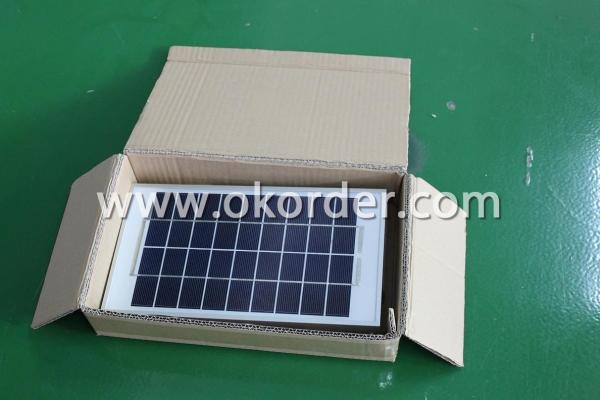
The Usage of Solar Polycrystalline Series
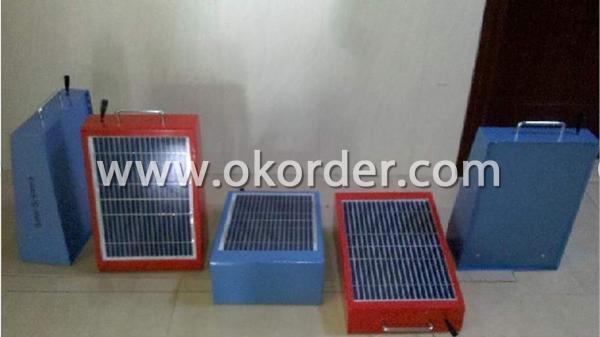
The Production Equipment of Solar Polycrystalline Series
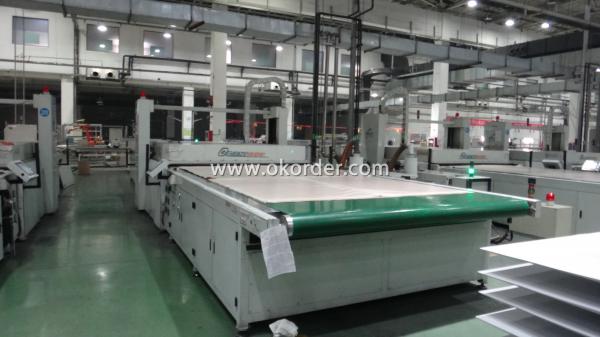
- Q: Are there any government incentives or tax credits for installing solar panels?
- Yes, there are government incentives and tax credits available for installing solar panels. These incentives vary by country and region, but they often include federal tax credits, state or provincial rebates, and local grants or loans. These financial incentives aim to promote the adoption of renewable energy sources and help offset the initial costs of installing solar panels. It is advisable to consult local authorities or renewable energy organizations to learn about specific incentives available in your area.
- Q: Ok so i can have a problem i have two 5 watt 2 volt solar panels a 2 volt battery and a 400 watt ac 2 volt dc inverter i believe im only getting 5 watts from from my solar panels thats the equivalent of one is there any way i could get full voltage from my solar panels without theoretically burning my wallet.. please help
- I think you need to take some basic courses on electricity. Usually, 8 volt solar panels are required to charge 2 volt batteries. The voltages of photovoltaic cells are set by the material they are made of, only current changes. If you hook up a 2 V solar panel to a 2 V battery, no current will flow, nothing would get charged. You would need some elaborate DC to DC voltage converters to charge a 2 V battery from 2 V solar panels. Solar panels can be connected in parallel or in series, as you've made the mistake of buying 2 V solar panel, you would have to wire them in series and have a charge controller that could limit the voltage of the charge. Did it ever occur to you that two 5 watt solar panels would not be able to provide the power needed by a 400 watt inverter? You're just running off your battery with your set up. Solar power is expensive power, you can not have solar without burning a hole in your wallet.
- Q: Can solar panels be installed on a farm or agricultural facility?
- Yes, solar panels can definitely be installed on a farm or agricultural facility. In fact, many farmers and agricultural businesses are increasingly turning to solar energy to reduce their reliance on traditional power sources and lower their operating costs. Solar panels can be installed on rooftops, barns, or open fields, providing a sustainable and clean source of electricity that can power farm operations, irrigation systems, or even be sold back to the grid. Additionally, solar installations on farms can also qualify for various incentives and grants, making it an economically viable and environmentally friendly choice for farmers.
- Q: Is there any way to charge my laptop with a solar panel? Is there any panel like that. Or if I work on panels can I do something like that. If you know anything about it, can you just help me? Thanks a lot.
- A solar panel is usually 36 cells and intended to charge a 2V lead acid battery. The battery in laptops may be somewhere between 5 and 20V. The panel might charge a laptop when it is cold, but they heat up in the sun and then it would no longer charge. Typical lap top power supplies are 3 to 4 amps. You need 2 panels in series to get enough voltage to charge the battery directly, but this is wasteful. If you want to charge at the same rate as a lap top power supply you need large panels to provide 5 amps. The 5 Amp panel will only give 5A when pointed directly at the full sun. There may be between 2 and 5 hours a day equivalent full sun depending where you are, time of year. If you want more than that, you need larger panels, or more than one in parallel for a 2V system. It makes sense to charge a 2V battery with the solar panel, and use that to operate the lap top with a car type power supply for a laptop, which runs from a 2V battery (see link below for an example). Get the biggest panel you can afford, and the battery should be larger if you want to run the lap top when the sun isn't shining. Perhaps a 20AH battery is a minimum size. All this costs more than a lap top.
- Q: How do solar panels affect the grid during times of high electricity demand?
- During times of high electricity demand, solar panels can help alleviate pressure on the grid by generating clean and renewable energy. As solar panels produce electricity directly from sunlight, they can contribute to meeting the increased power needs without relying heavily on traditional power plants. This reduces the strain on the grid and helps ensure a stable electricity supply during peak demand periods.
- Q: Can solar panels be used in areas with frequent power outages?
- Yes, solar panels can be used in areas with frequent power outages. Solar panels generate electricity from sunlight, which means they can continue to produce power even when the main grid is down. However, for uninterrupted power supply during outages, it is important to have an energy storage system, such as batteries, to store excess energy generated during the day for use at night or during power outages.
- Q: Me and my wife just saw an ad on TV about going solar and saw the money we can save every month... any here have solar panels? How much do you save every month on energy bill? Is it true that your energy meter will spin backwards? lol
- I have them. Jamie's way of going about it is one way, the other way is to do-it-yourself. I went the DYI way and got off the grid. I bought my panels online along with the batts, they were cheap. I paid cash on the spot, this allowed me to not get into paperwork and possibly financing it. Now I save what I was paying every month. I am not interested in the meter going backwards and selling my power, I am free now!
- Q: Can solar panels be installed on a warehouse or distribution center?
- Yes, solar panels can be installed on a warehouse or distribution center. In fact, these large flat rooftops are ideal locations for solar panel installations due to their ample space and reduced shading. By harnessing solar energy, warehouses and distribution centers can significantly reduce their dependence on traditional grid electricity and lower their carbon footprint.
- Q: Can solar panels be installed on a hotel or hospitality facility?
- Yes, solar panels can certainly be installed on a hotel or hospitality facility. In fact, many hotels and hospitality facilities have already embraced solar energy as a sustainable and cost-effective solution to their energy needs. By installing solar panels, these establishments can reduce their reliance on traditional energy sources, lower their carbon footprint, and potentially save on energy costs in the long run. Additionally, solar panels can be integrated into the design of the building or installed on the rooftop, making them a viable option for hotels and hospitality facilities of any size.
- Q: but is that per day, per hour or minute?How much watts does the average AC unit use?How much does an energy efficient lightbulb use?All in all let's hypothetically say we no longer use the electric company for our energy source, How many of these panels do you estimate it would take to supply our small home?
- The watt is a measure of instantaneous output that can also be used as an hourly measure. volt at amp for hour = watt but also a 00watt bulb requires a 00watt power source, regardless of how long it is on, the 00watts is used as an instantaneous term here. Aircon starts at about 000watts and the new energy efficient bulbs are about 7-5 watts. If you have an electric cooker, that might use 3000 watts, your computer about 500 (very variabke these days though, many are now much lower than this) Your biggest concern would be storage, solar only works when the sun shines so you need a bank of batteries to charge during the day and provide power on demand, they require proper managenemt to ensure ther are charged properly and in turn, an inverter will be required to produce the AC power your appliances will need. It all represents a huge investment with a long payback time and you would still probably need to top-up with a generator during winter, or become ahmish.
Send your message to us
Solar Polycrystalline Solar Panels Set
- Loading Port:
- Shanghai
- Payment Terms:
- TT
- Min Order Qty:
- 1 pc
- Supply Capability:
- 100000/month pc/month
OKorder Service Pledge
OKorder Financial Service
Similar products
Hot products
Hot Searches
Related keywords
